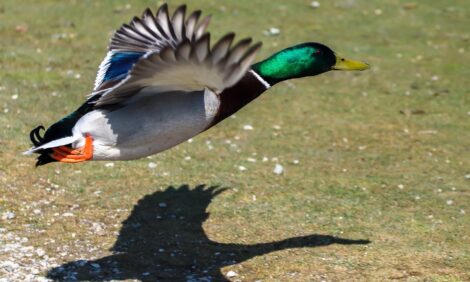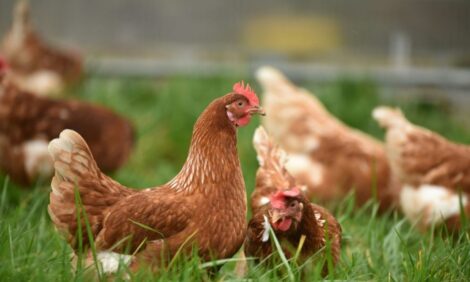



Two key factors in a robust IBD defense: Speed of replication and onset of immunity
Vector vaccines have been shown to stimulate early protection against the IBD virus.Infectious bursal disease (IBD) poses a major risk to poultry health, leading to immune suppression that increases vulnerability to secondary infections and can negatively affect bird growth and uniformity.
However, vector vaccines applied either in ovo or at day of hatch have been shown to stimulate early protection against the IBD virus,1 which may help ensure healthier, more uniform birds despite the risks posed by the IBD virus and prove to be an important consideration when evaluating vaccine options.
Two important contributors of early protection are speed of replication and onset of immunity, according to Alberto Giner, poultry technical manager, Zoetis Spain. Understanding both can help poultry producers and veterinarians develop optimum vaccination programs for their poultry flocks.
Replication versus onset of immunity
Viruses spread and cause disease by invading host cells and using their cellular functions to replicate. The rate at which this occurs is known as “speed of replication” and different viruses have different replication rates.
Live-attenuated and recombinant vector vaccines that target viral pathogens also replicate in host cells, but often at a slower rate, allowing the host’s immune system to develop a protective response. The amount of time it takes for this protection to develop is known as the “onset of immunity.” In addition, live IBD vaccines can replicate only when maternally derived antibodies are sufficiently low. Vector vaccines are less impacted by this limitation, Giner said.
Onset of immunity refers to the time it takes for a vaccine to begin providing immunity or generating an immune response in the bird against a disease, effectively protecting it in case of exposure. Typically, this immune response is both humoral – with the production of specific neutralizing antibodies – and cellular – with the activation of various cells such as phagocytic cells, memory B cells (responsible for “remembering” the virus and allowing for the rapid production of specific antibodies in case of antigen exposure), and other specialized cells.
“Ideally, the speed of replication of the vaccine virus is fast enough to stimulate the immune system (initiate onset of immunity) before a field virus can cause disease,” Giner said.
Early immunity protects against predominant IBD challenges
Zoetis conducted a multipart study to measure early onset of immunity against four IBD challenges predominant in different global regions, including comparisons to leading HVT-IBD vaccines, as well as determining duration of immunity.1
In this study, an HVT-IBD vaccine (Poulvac® Procerta® HVT-IBD) showed 96%-98% efficacy against classical virulent IBD gross lesions and 100% protection from histological lesions/lymphocyte depletion following a Day 14 virulent IBD challenge.1
In addition, when protection was assessed based on bursa to body weight ratio in specific-pathogen-free birds, the HVT-IBD vaccine showed 95% protection, whereas market leader A showed 75% protection and market leader B showed 65% protection.1
From these laboratory studies, it can be assumed that the vaccine construction and speed of replication of Poulvac Procerta HVT-IBD may contribute to its early onset of protective immunity, Giner noted.
Vaccine backbone influences efficacy of vector vaccines
Research demonstrates that each HVT vaccine strain – whether vectorized or not – is unique and has different efficacy to protect against Marek’s disease. The selection of the optimal HVT backbone for a vector vaccine can influence the efficacy of the vaccine candidate.2
The dose and age at inoculation also influences vaccine efficacy. Vaccines applied in ovo allow immunity to begin to develop pre-hatch so the chick will be protected soon after hatch.2
Learn more about recombinant vaccine efficacy at poulvacprocerta.com.









